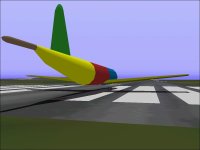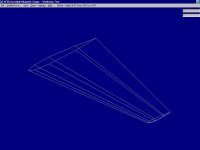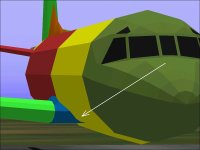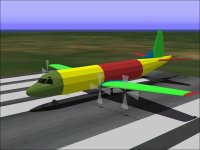Blood_Hawk23
Charter Member
Hello Ivan,
I managed to improve some angles a bit by placing the windows onto the metal panels instead of between window spars as I had been experimenting. This way I could make window-sills without any extra parts, and even saves some to make an extra triangulation possible under the side windows.
Changes in angles of the spars depending on the viewing point were driving me crazy - I think it happens when the vertice is only correct in 2 of the 3 x-y-z viewing axes, one of them being out.
In some cases the lines of the parts flow a little better,
Here are three screenshots of the improvements.
Very interesting, the visit to the sub-sub-basement of Blood Hawk!
Well... Cheers,
Aleatorylamp
I'm really seeing her now. That last pic without the textures looks spot on to me. You both are doing some beautiful work. I've done some modeling in Gmax and banged my head on the desk a few times. I can only guess at what its like doing it like this.
If your looking to give her a pretty dress, use LC-82 of VP-8.
http://www.ebay.com/itm/US-NAVY-PATROL-SQUADRON-8-VP-8-1979-CRUISE-BOOK-/251383606742#ht_2591wt_1118
In here you see her flying past the "Rock". If you're interested that is. Always loved that pic.
Trying to see if my Dad has any pics from when they got the Battle "E".



















